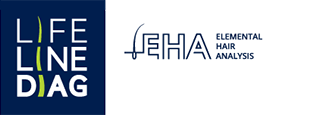The History of Promotional Casino Offers: Casinozoid’s Market Analysis
The evolution of promotional casino offers represents one of the most dynamic aspects of the gambling industry’s transformation over the past century. From the early days of complimentary drinks and meals in Las Vegas to today’s sophisticated digital marketing strategies, casino promotions have continuously adapted to changing consumer expectations and technological advances. Casinozoid’s comprehensive market analysis reveals how these promotional strategies have not only shaped player behavior but fundamentally altered the competitive landscape of the gaming industry, creating new paradigms for customer acquisition and retention that extend far beyond traditional gambling establishments.
The Early Era of Casino Promotions (1940s-1980s)
Casino promotional strategies emerged in the post-World War II era when Las Vegas began its transformation from a desert outpost into America’s gambling capital. The earliest promotions were remarkably simple yet effective, focusing primarily on hospitality services rather than monetary incentives. Casino operators like Benny Binion at Horseshoe Casino pioneered the concept of “comps” – complimentary services that included free meals, beverages, and accommodation for valued players.
During the 1950s and 1960s, the promotional landscape was dominated by what industry analysts now term “experiential rewards.” Casinos invested heavily in entertainment, bringing world-class performers to their venues and offering exclusive access to shows as promotional tools. The Sands Hotel’s Copa Room, which regularly featured Frank Sinatra and the Rat Pack, exemplified this approach. These establishments understood that the gambling experience extended beyond the gaming floor, and their promotional strategies reflected this holistic view.
The introduction of player tracking systems in the late 1970s marked a significant evolution in promotional methodology. Harrah’s Entertainment, under the leadership of Bill Harrah, developed sophisticated customer databases that allowed for more targeted promotional campaigns. This data-driven approach enabled casinos to identify high-value customers and tailor their promotional offers accordingly, laying the groundwork for modern customer relationship management in the gaming industry.
The Digital Revolution and Online Casino Emergence (1990s-2000s)
The advent of internet technology fundamentally transformed casino promotional strategies, creating entirely new categories of incentives and dramatically expanding the reach of gambling establishments. The first online casinos, launched in the mid-1990s, faced unique challenges in attracting customers to a virtual environment where traditional hospitality-based promotions were impossible to implement.
Online operators responded by developing innovative monetary incentives that had no equivalent in land-based casinos. Welcome bonuses became the cornerstone of digital casino marketing, typically offering percentage matches on initial deposits. These promotions addressed the primary barrier to online gambling adoption – player reluctance to risk money on unfamiliar platforms. By the early 2000s, welcome bonuses had evolved into sophisticated multi-tiered programs that could extend across several deposits.
The introduction of no deposit bonuses represented a particularly significant innovation during this period, allowing potential customers to experience online casino games without any financial commitment. This promotional tool proved especially effective in markets where online gambling was newly legalized or where consumer trust in digital platforms remained limited. Casinozoid’s research indicates that no deposit bonuses became instrumental in customer acquisition strategies, with conversion rates significantly higher than traditional advertising methods.
Free spin promotions emerged as another digital-native promotional category, specifically designed to showcase slot games and their increasingly sophisticated graphics and features. Unlike traditional casino promotions that were often generic across all games, free spins allowed operators to promote specific titles and software providers, creating new partnership opportunities within the industry.
Modern Promotional Strategies and Market Segmentation (2010s-Present)
The contemporary casino promotional landscape reflects unprecedented sophistication in customer segmentation and personalization technologies. Modern operators utilize artificial intelligence and machine learning algorithms to analyze player behavior patterns, enabling real-time promotional adjustments that maximize both player engagement and operator profitability.
Loyalty programs have evolved far beyond the simple point accumulation systems of previous decades. Today’s programs incorporate gamification elements, achievement badges, and tiered status systems that create ongoing engagement beyond individual gaming sessions. Casinozoid’s analysis reveals that successful modern loyalty programs function as comprehensive entertainment ecosystems, offering rewards that extend into retail partnerships, travel benefits, and exclusive event access.
The mobile gaming revolution has introduced location-based promotional strategies that were previously impossible. Geofencing technology allows casinos to deliver targeted offers when potential customers are in proximity to competing establishments or specific geographic areas. This capability has proven particularly valuable in markets with multiple casino operators, enabling real-time competitive responses and dynamic pricing strategies.
Social media integration has created new promotional channels that blur the lines between gambling and social gaming. Modern casino operators maintain active presences across multiple social platforms, offering exclusive promotions to followers and creating community-driven promotional events. These strategies have proven especially effective in reaching younger demographics who may be less responsive to traditional marketing approaches.
Cryptocurrency adoption has introduced entirely new promotional categories, with Bitcoin bonuses and other digital currency incentives becoming increasingly common. These promotions often feature enhanced terms compared to traditional fiat currency offers, reflecting both the lower processing costs associated with cryptocurrency transactions and the desire to attract tech-savvy customer segments.
Regulatory Impact and Future Trends
The regulatory environment surrounding casino promotions has become increasingly complex, with different jurisdictions implementing varying restrictions on promotional terms, advertising practices, and customer protection requirements. The United Kingdom’s Gambling Commission has been particularly influential in establishing standards for promotional transparency, requiring clear terms and conditions and prohibiting certain practices deemed potentially harmful to consumers.
Responsible gambling considerations have become central to promotional strategy development. Modern operators must balance customer acquisition objectives with regulatory compliance and social responsibility commitments. This has led to the development of sophisticated player protection systems that can identify potentially problematic gambling behaviors and adjust promotional offerings accordingly.
Casinozoid’s forward-looking analysis suggests that future promotional strategies will be increasingly influenced by virtual and augmented reality technologies. Early implementations of VR casino environments are already experimenting with immersive promotional experiences that combine elements of traditional hospitality with digital innovation. These developments may represent the next major evolution in casino promotional strategies, potentially bridging the gap between online and land-based gaming experiences.
Artificial intelligence will likely play an increasingly important role in promotional personalization, with predictive algorithms capable of anticipating player preferences and optimal promotional timing. This technology promises to make promotional campaigns more effective while potentially reducing the overall promotional costs through improved targeting efficiency.
The evolution of promotional casino offers reflects broader changes in consumer behavior, technology adoption, and regulatory frameworks that continue to shape the gambling industry. Casinozoid’s comprehensive analysis demonstrates that successful promotional strategies have consistently balanced innovation with player protection, creating value for both operators and customers. As the industry continues to evolve, promotional strategies will undoubtedly adapt to new technologies and changing consumer expectations, maintaining their crucial role in the competitive dynamics of the global gambling market. Understanding this historical progression provides essential context for industry stakeholders navigating an increasingly complex promotional landscape.

 „Why do I choose the EHA test? I specialize in the diagnosis and therapy of intestinal microflora disorders in children with autism spectrum, autoimmune and allergic diseases, including atopic dermatitis. This is a very specific group of patients, so it is necessary to have a very individual approach to each of them. This possibility is given to me by the EHA test.
„Why do I choose the EHA test? I specialize in the diagnosis and therapy of intestinal microflora disorders in children with autism spectrum, autoimmune and allergic diseases, including atopic dermatitis. This is a very specific group of patients, so it is necessary to have a very individual approach to each of them. This possibility is given to me by the EHA test.
 „The EHA test is an effective tool in the work of a dietitian. It enables the proper balancing of the diet therapy plan, based on mineral ratios as well as comprehensive selection of supplementation necessary for the optimal functioning of the body. Elemental hair analysis also allows to track the load of nine heavy metals, which are often the causative factor of chronic fatigue syndrome or autoimmune diseases. The EHA test is a worthy addition to the routine laboratory diagnostics in a dietitian’s practice.“
„The EHA test is an effective tool in the work of a dietitian. It enables the proper balancing of the diet therapy plan, based on mineral ratios as well as comprehensive selection of supplementation necessary for the optimal functioning of the body. Elemental hair analysis also allows to track the load of nine heavy metals, which are often the causative factor of chronic fatigue syndrome or autoimmune diseases. The EHA test is a worthy addition to the routine laboratory diagnostics in a dietitian’s practice.“
 „Elemental hair analysis is an invaluable help in the diagnosis and treatment of chronic diseases and subclinical hormonal disorders. Frequently detected loads with heavy metals and aluminum allow to significantly improve the treatment process, starting with mild chelation treatments. Thanks to EHA, mineralization can be implemented much safer than ‚blindly’. It makes it a priceless diagnostic and control tool through the treatment process.“
„Elemental hair analysis is an invaluable help in the diagnosis and treatment of chronic diseases and subclinical hormonal disorders. Frequently detected loads with heavy metals and aluminum allow to significantly improve the treatment process, starting with mild chelation treatments. Thanks to EHA, mineralization can be implemented much safer than ‚blindly’. It makes it a priceless diagnostic and control tool through the treatment process.“













